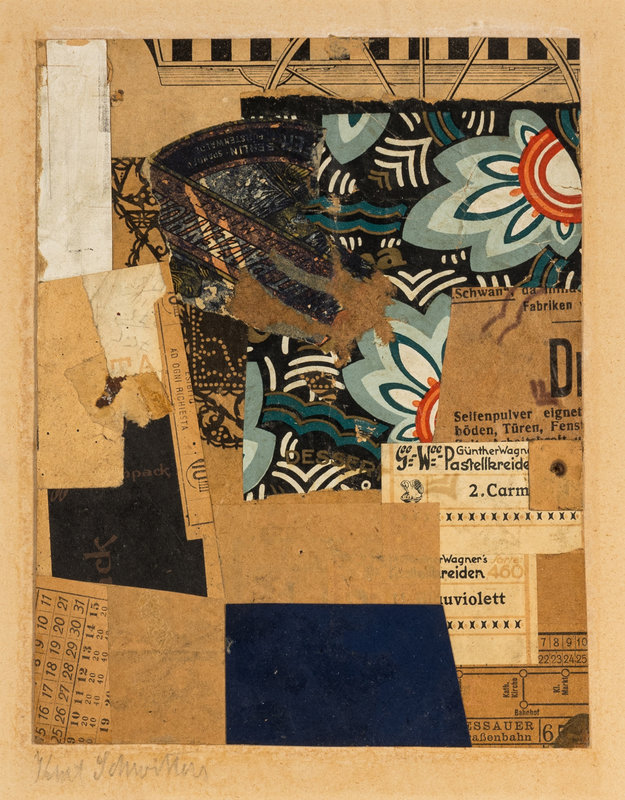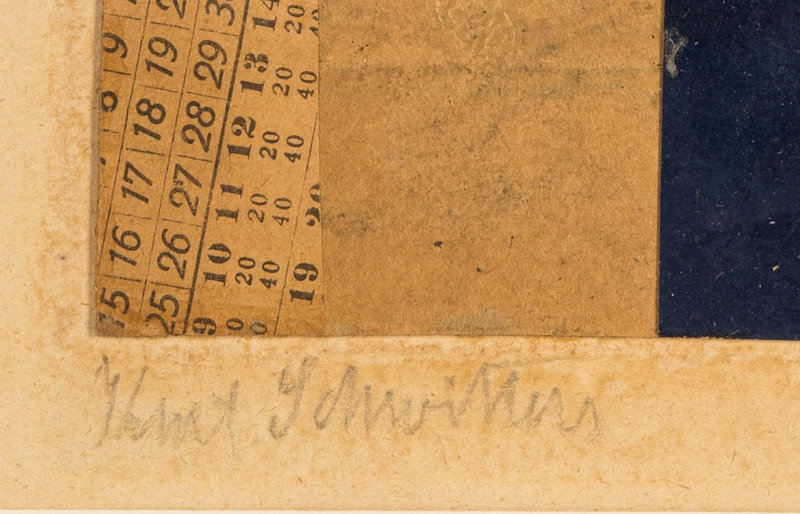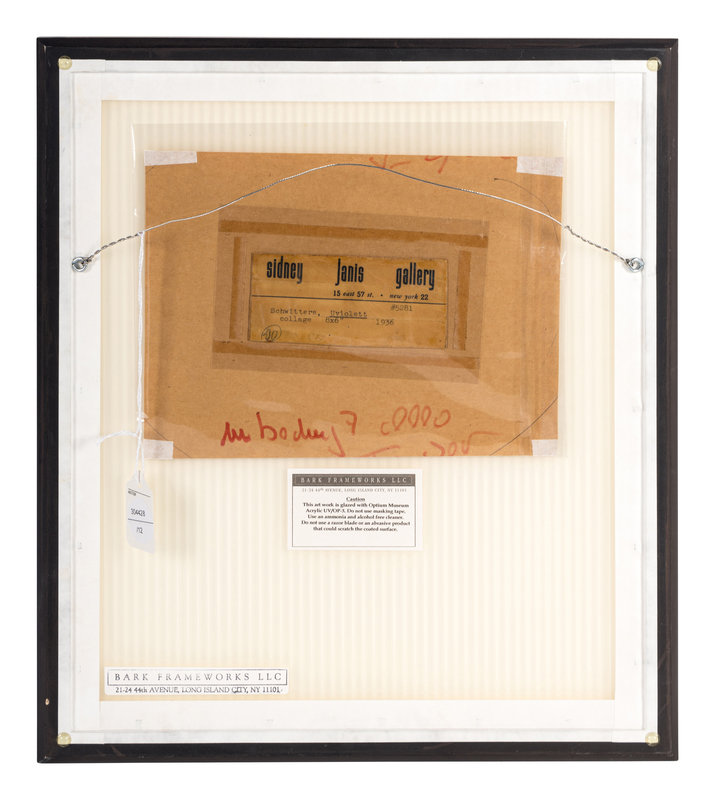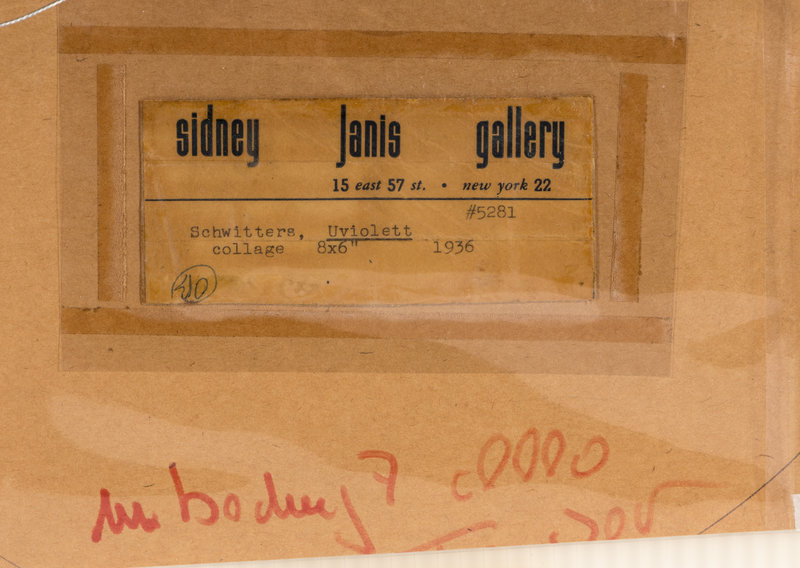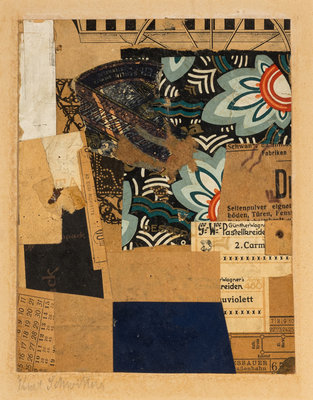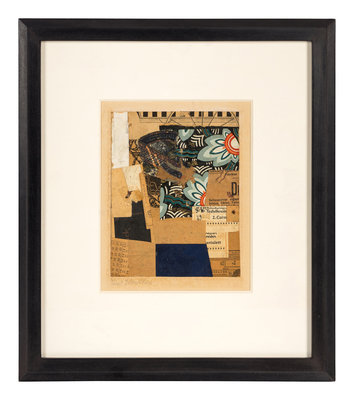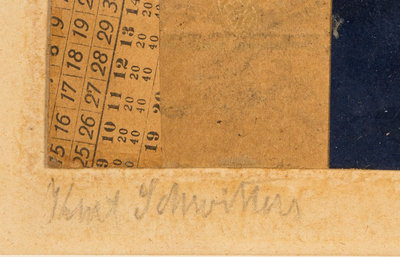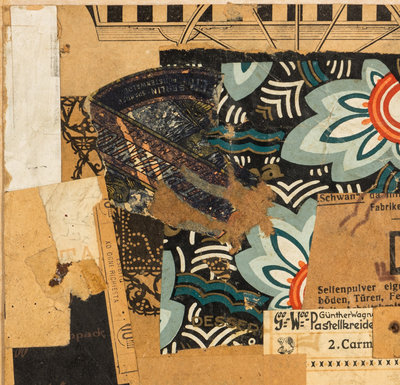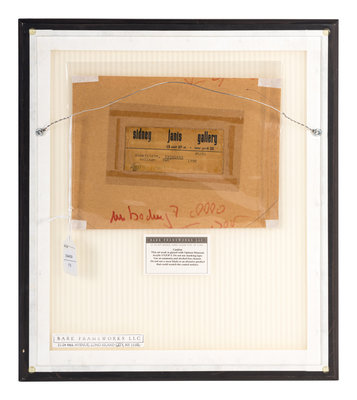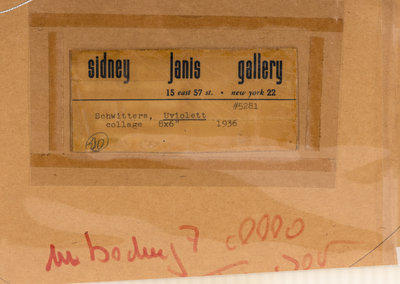Condition Report
Contact Information
Auction Specialist
Lot 65
Kurt Schwitters
(German, 1884-1948)
Untitled (uviolett), c. 1926-28
Sale 1175 - European Art
May 18, 2023
10:00AM CT
Live / Chicago
Own a similar item?
Estimate
$40,000 -
60,000
Price Realized
$25,200
Sold prices are inclusive of Buyer’s Premium
Lot Description
Kurt Schwitters
signed Kurt Schwitters (lower right)
7 1/4 x 5 1/2 inches.
Property From the Estate of Lucia Woods Lindley
(German, 1884-1948)
Untitled (uviolett), c. 1926-28
paper collage on card mounted on paper
signed Kurt Schwitters (lower right)
7 1/4 x 5 1/2 inches.
Property From the Estate of Lucia Woods Lindley
